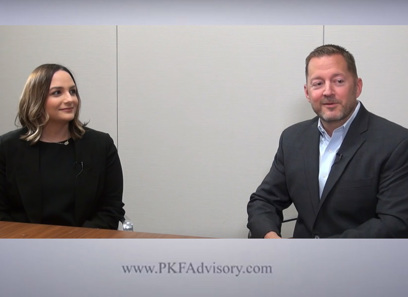The Influence of Mergers and Acquisitions on Market Characteristics and Competitors
The landscape of mergers and procurements presents an intricate interplay between cultivating growth and possibly weakening competitive stability within markets. As firms seek strategic alignments to improve effectiveness and development, the ramifications on consumer choice and market pricing warrant cautious examination. While the advantages of such loan consolidations can be obvious, the darker ramifications typically arise, increasing essential inquiries about market power and the regulatory frameworks made to maintain equilibrium. This discussion invites an exploration of the subtleties included, revealing exactly how these company maneuvers reshape the extremely structures of competitors.
Summary of Mergers and Acquisitions
Mergers and acquisitions (M&A) play a critical duty in forming the landscape of contemporary service, as companies seek to boost their competitive edge and attain calculated purposes. M&A purchases include the combination of business or assets through different financial transactions, consisting of mergings, where 2 firms integrate to develop a new entity, and procurements, where one business purchases an additional outright. These activities are driven by a myriad of aspects, such as the search of synergies, diversity of item offerings, and the desire to get in brand-new markets.
The M&A process commonly involves numerous phases, including critical planning, due diligence, settlement, and assimilation (Emerging Market Opportunities). Firms carry out complete analyses to determine prospective targets that align with their development approaches and examine the economic and functional effects of a purchase. Regulatory considerations likewise play a crucial role, as antitrust legislations are developed to avoid monopolistic techniques that could damage competition
As companies navigate the complexities of M&A, the end results can considerably impact stakeholders, including staff members, shareholders, and clients. Understanding the characteristics of M&A is crucial for evaluating their implications within the wider context of market behavior and competitive positioning.
Positive Effects on Market Characteristics
The debt consolidation of business via procurements and mergings can result in considerable favorable impacts on market dynamics. Among the primary benefits is the improvement of operational efficiencies. By incorporating resources, firms can enhance processes, lower redundancies, and accomplish economic situations of scale, eventually decreasing expenses and enhancing profitability. This performance can convert right into lower prices for consumers, fostering an extra open market setting.

Additionally, raised market share resulting from mergers can offer firms with higher bargaining power with distributors and representatives, facilitating boosted terms and conditions that can profit the general supply chain.
Negative Repercussions for Competition

Furthermore, the elimination of competitors with acquisitions can stifle development. When crucial gamers combine, smaller firms might have a hard time to contend, leading to a homogenization of solutions and products. The resultant absence of competition can develop a setting where continuing to be firms have less incentive to purchase r & d.
Additionally, mergers can produce barriers to entrance for new firms, as the joined entity may take advantage of its improved resources to dominate the marketplace. This can hinder potential participants, consequently restricting competition and development in the lengthy term.
Ultimately, while mergers and acquisitions can provide tactical advantages, their prospective to weaken competitors demands mindful factor to consider of their more comprehensive implications on the market characteristics. The balance between development and affordable stability continues to be a vital problem in examining such business approaches.
Regulative Factors To Consider and Oversight
Regulative structures play a vital function fit the landscape of mergers and purchases, guaranteeing that market dynamics remain reasonable and competitive. These structures are made to stop anti-competitive actions and to safeguard customer rate of interests. Regulatory bodies, such as the Federal Profession Payment (FTC) in the United States and the European Commission in the EU, examine suggested procurements and mergings based upon their potential influence on competition within the market.
The evaluation process includes a comprehensive examination of the marketplace share, potential for monopolistic techniques, and the overall economic ramifications of the purchase. Regulatory authorities commonly impose problems or need divestitures to alleviate problems over lowered competition, ensuring that the merged entity does not dominate the marketplace unjustly.
This collective technique helps to cultivate a well balanced regulative environment that advertises technology while safeguarding affordable practices. Eventually, effective regulative factors to consider are vital in maintaining market integrity and encouraging healthy competition in the face of developing business landscapes.
Study and Real-World Examples
Frequently, case studies of noteworthy mergings and purchases show the profound effects these transactions can carry market characteristics. The 2000 merging between AOL and Time Detector offers as an archetype, where the expected synergies failed, leading to a drastic decrease in shareholder value. This case emphasizes just how social misalignments and overestimation of market capacity click here to read can disrupt competition.
In comparison, the purchase of WhatsApp by Facebook in 2014 exemplifies an effective assimilation that reshaped the interaction landscape. Emerging Market Opportunities. Facebook leveraged WhatsApp's individual base to boost its service offerings, successfully increasing its market dominance while maintaining competitors in the messaging industry
One more considerable instance is the merger of Exxon and Mobil in 1999, which developed among the world's largest oil firms. This debt consolidation led to better effectiveness however elevated concerns about minimized competitors in the energy market, anonymous triggering governing examination.
These instances highlight the complicated interaction in between mergings and purchases and market dynamics, showcasing both the possible benefits and mistakes that can emerge, eventually shaping competitive landscapes across industries.
Final Thought
Mergers and procurements play a critical function in forming market dynamics and competitors. Efficient governing oversight is necessary to make certain that the benefits of M&An activities are maximized while alleviating adverse effects on market competition.
One significant issue is the potential for lowered market competition, as mergers typically lead to the combination of market power amongst fewer players. Regulatory bodies, such as the Federal Profession Payment (FTC) in the United States and the European Commission in the EU, examine recommended mergers and acquisitions based on their prospective influence on competitors Full Article within the market.

Mergers and acquisitions play an essential function in forming market dynamics and competition. Reliable regulative oversight is crucial to ensure that the advantages of M&A tasks are made the most of while alleviating adverse effects on market competition.